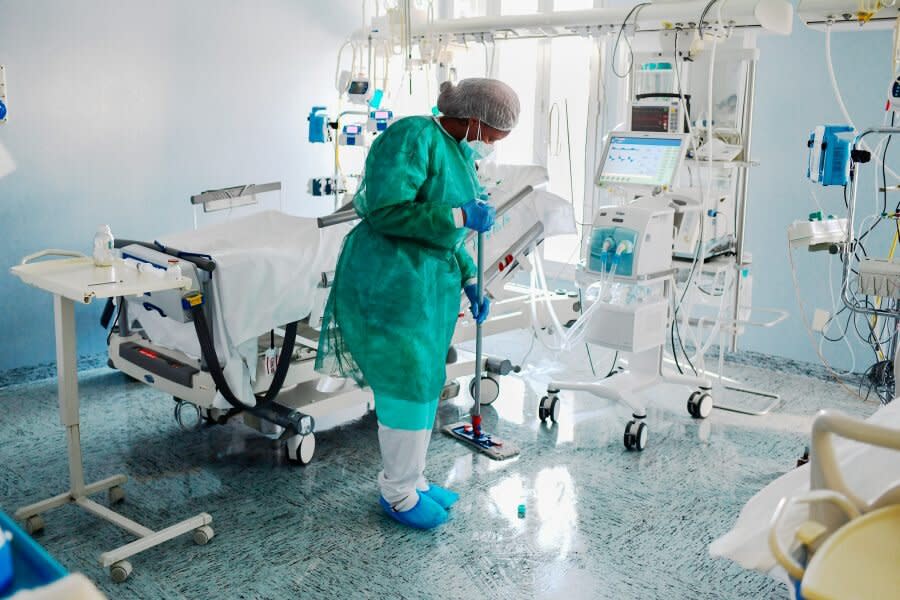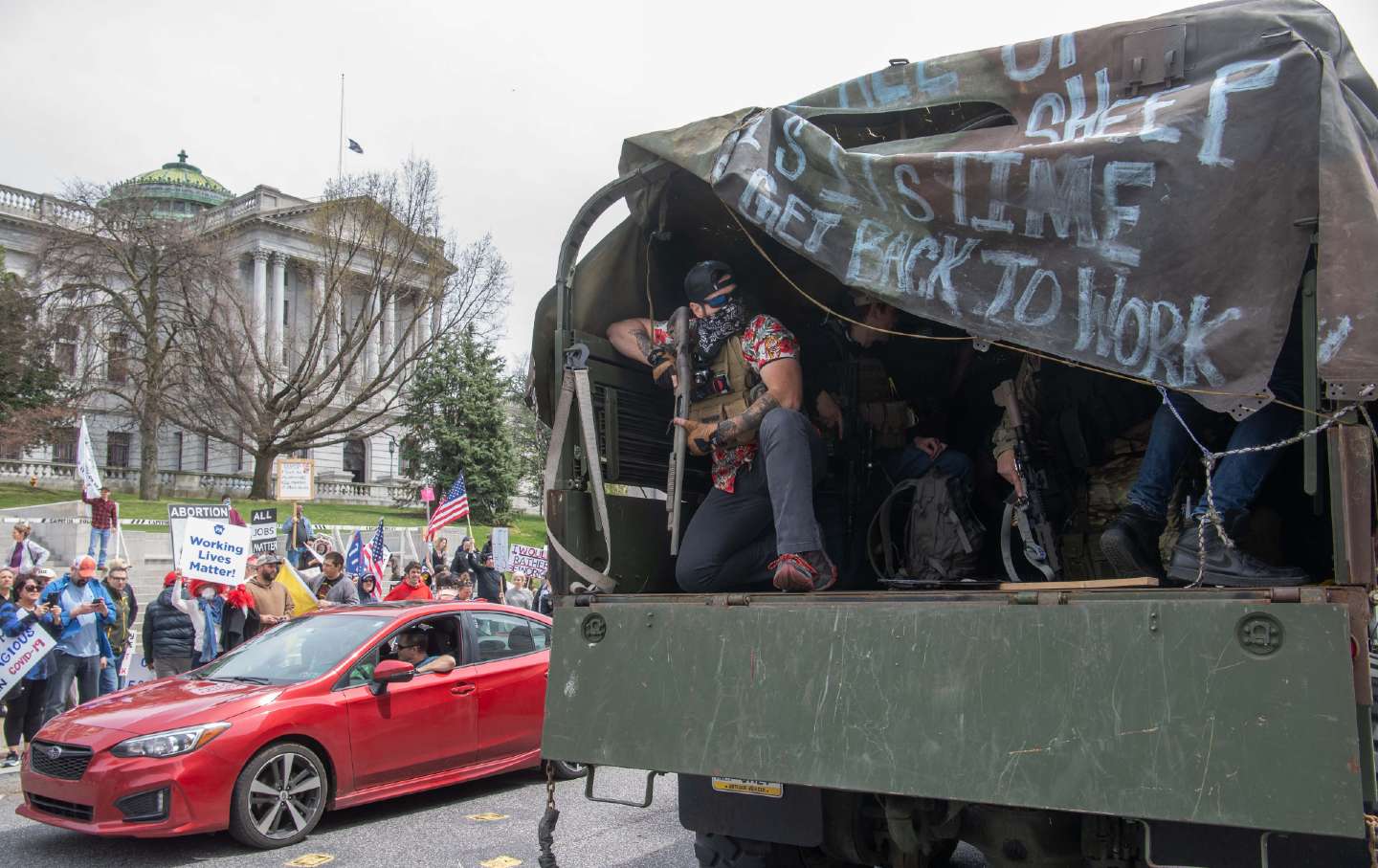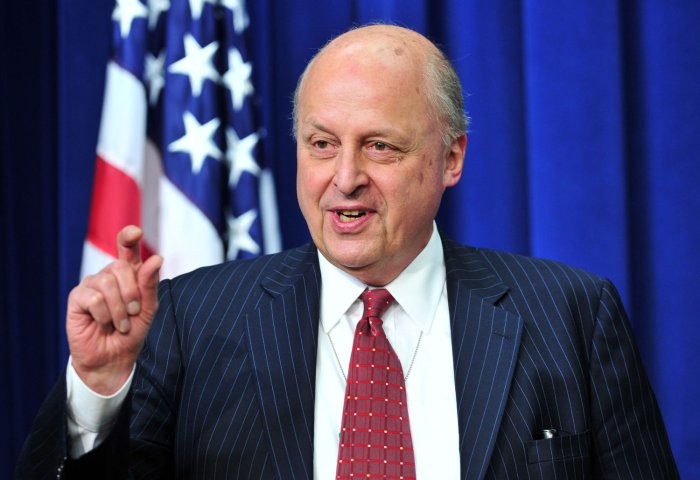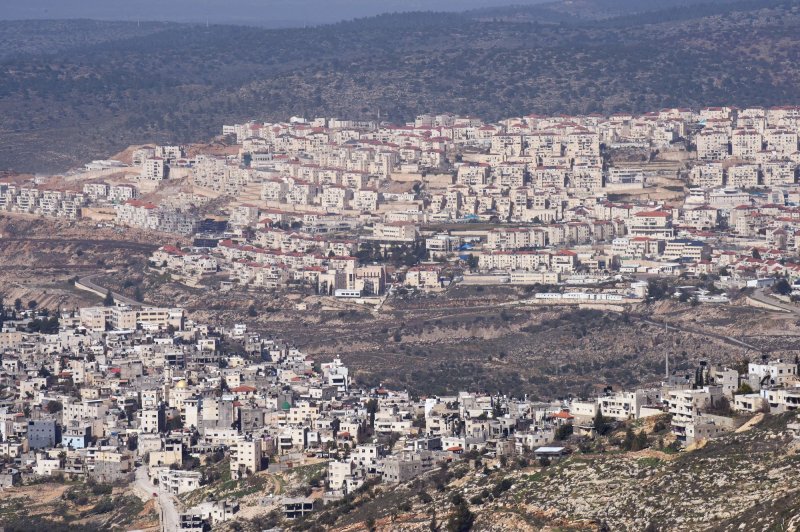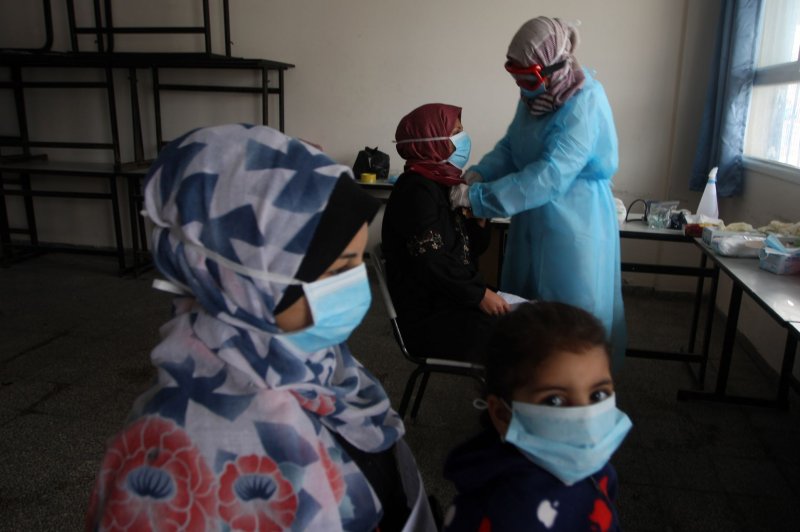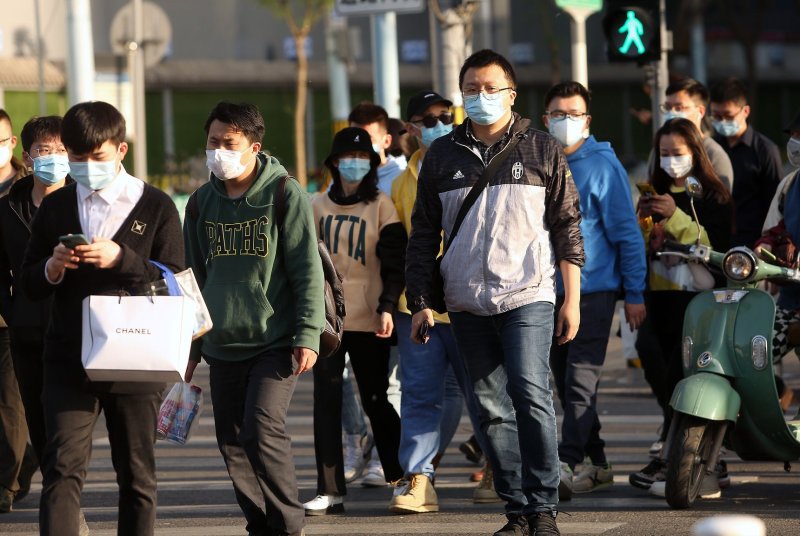Shira Feder INSIDER•April 20, 2020

Dana-Farber Cancer Institute
Masks being sterilized at the Dana-Farber Cancer Institute
At the Dana–Farber Cancer Institute, a non-profit hospital located in Boston, a team of researchers discovered they could use existing sterilization technology to decontaminate disposable personal protective gear (PPE) for reuse.
They are the only facility in the world sterilizing their N95 masks, face shields, and PAPR hoods in this way.
Using this technology, they can sterilize 2,000 N95 masks in two hours.
As N95 masks ran out across America, Melissa McCullough began to get concerned.
Patients from all over the world come to Dana-Farber Cancer Institute in Boston for cancer care, and the non-profit hospital employs over 5,000 people. But without access to the proper personal protective equipment, or PPE, McCullough knew they wouldn't be able to provide that care.
"We recognized that we had a supply chain problem," McCullough, the senior director of Environmental Health and Safety at Dana-Farber Cancer Institute, told Insider. "It was becoming particularly obvious to us that the supply chain was broken and it wasn't coming in."
So the research operations team at the hospital decided to test whether disposable N95 masks, used by medical workers to protect themselves from viruses like COVID-19, could be cleaned effectively enough to be reused. Two weeks later, their hunch was confirmed, and Dana-Farber became the only hospital in the world to use ionized hydrogen peroxide technology to sterilize PPE.
On April 20, Dana-Farber will begin decontaminating 2,000 masks a day with a two-hour sterilization process, and each formerly-disposable mask will be able to be reused five times. Here's what the process looks like.
The decontamination system was built into a room in the hospital.

The machine is manufactured by Tomi, an infectious disease control company based in Beverly Hills.
Dana-Farber Cancer Institute
Prior to the pandemic, the Steramist ionized hydrogen peroxide system was used to sterilize anything coming into the hospital from the outside world, from garbage bags to sensitive experimental materials.
The machine sends a stream of hydrogen peroxide through a plasma arc, and delivers a misting solution of ionized hydrogen peroxide to everything in the room. The system was designed to work with the existing HVAC system, which shuts off when the machine is on, and aerates the room when the process is over.
McCullough doesn't know exactly how much the system costs, as it was built in with the rest of the building, but she says it's not cheap. She estimates that the misting solution alone costs about $250 per 2,000 masks.
The focus is on sterilizing N95 respirators, face shields, and PAPR hoods.

The world is facing an N95 mask shortage.
Dana-Farber Cancer Institute
For the experiment, Dana-Farber researchers had to see if the machine would work on face shields, N95 respirators, and PAPR hoods, which are powered air purifying respirators worn over the head. All of these items, which block coronavirus-laced droplets, are in high demand for healthcare workers at hospitals.
"Anyone who's going into a really hot environment with COVID-19 positive patients is wearing either a heavy duty N95 respirator and a face shield or a PAPR," said McCullough.
Researchers only tested the procedure on 12 N95 masks, as McCullough and her core team, who called themselves SEAL Team 9, "were very cognizant of the fact that these were precious materials," she said.
The materials were set up in the room for five days with biological indicators underneath them. If nothing grew on them, SEAL Team 9 would know that the masks had been sterilized.
The respirators had to be sent a testing facility that checked for filtration efficiency, to ensure the mist hadn't affected their ability to filter pathogens.
Ultimately, the team found that the PPE could be safely re-sanitized at least five times.
The system works because hydrogen peroxide reacts with air and turns to water.

There is a small but growing body of N95 decontamination research being conducted.
Dana Farber Cancer Institute
After the decontaminated N95 masks were rolled out, there was some apprehension from Dana-Farber staffers about whether they would really work.
"There was some concern, when you hear something's been treated with a chemical that you're going to put on your face," McCullough said.
Staffers were concerned because breathing in hydrogen peroxide in high concentrations can be damaging. "It kills pathogens, and it can also kill healthy cells," said McCullough. "A 3% hydrogen peroxide solution, you can buy at CVS and gargle. We're taking a 7.8% solution, and putting it into a mist in the air."
This kills pathogens because hydrogen peroxide reacts with air and turns to water and oxygen. "If you've ever left a bottle of hydrogen peroxide open in your medicine cabinet, when you come back, it will all react with air and turn to water," said McCullough.
To protect against residual hydrogen peroxide, McCullough and her team added extra time for the masks to air out.
Many researchers are rushing to find alternate ways to decontaminate N95 masks.

UV light and dry heat can also be used to decontaminate N95 masks.
Dana Farber Cancer Institute
McCullough says most other hospitals wouldn't be capable of doing this procedure, because they don't have a room dedicated to the sterilization of materials.
"You can do small numbers in a biosafety cabinet that's set up, or you can set up a room with a handheld version of the equipment that we have in the room," she said. "You can do this on individual pieces, but the amount of effort that it takes to do 10 pieces is equivalent to the amount of effort it takes for us to do thousand pieces."
Dana-Farber's decontamination system isn't the only one on the market. There's also the Battelle system, which recently received a $415 million contract from the Pentagon, although McCullough noted that their process takes eight hours to Dana-Farber's two.
Duke University has also announced plans to use hydrogen peroxide for mask decontamination at three of its hospitals.
According to the National Institutes of Health, UV light, dry heat, and ethyl alcohol can also be used to sanitize masks.
